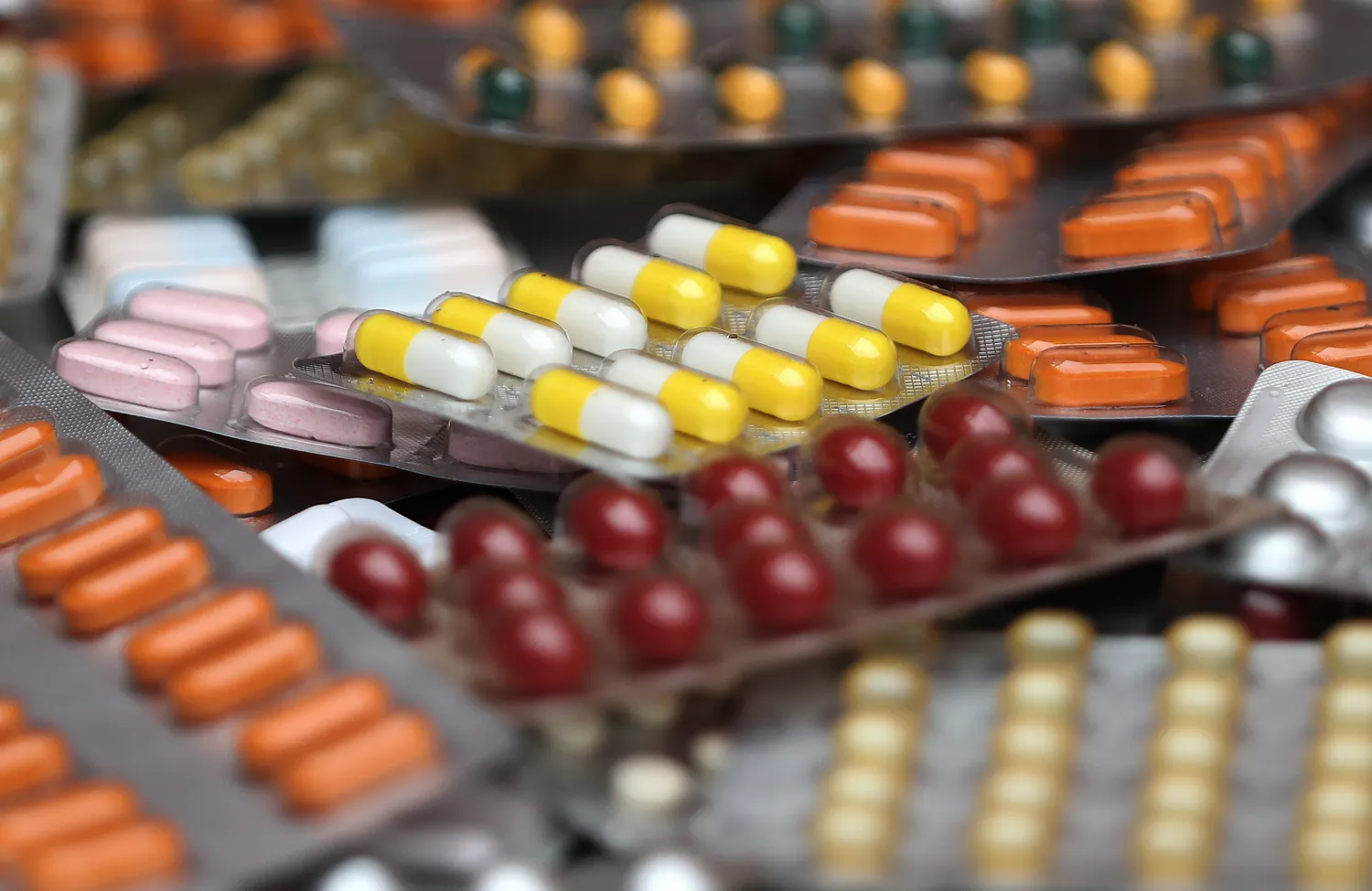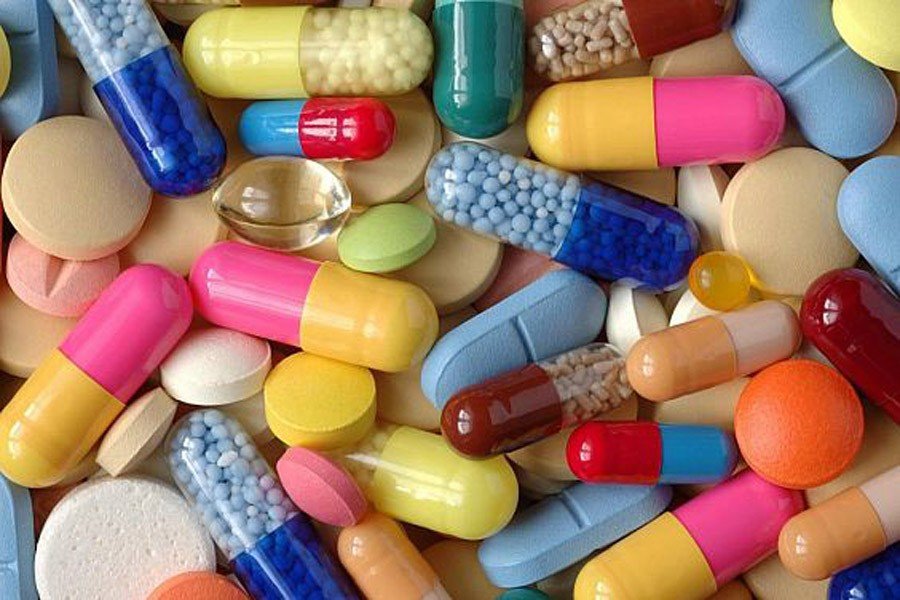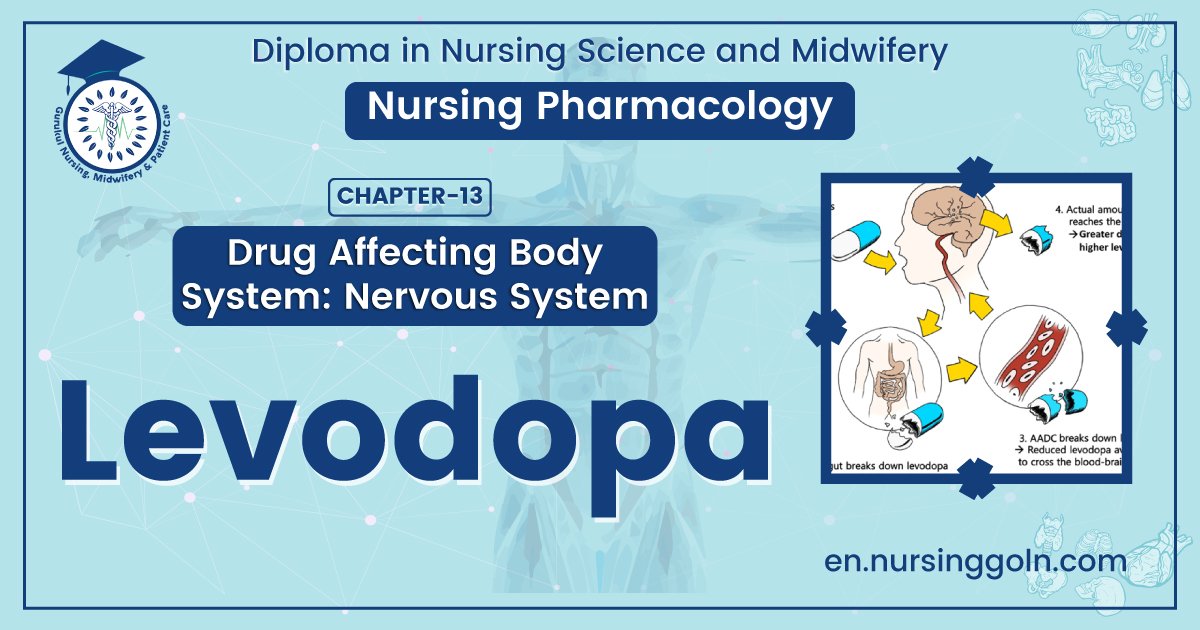Concept About Levodopa – This book covers the entire syllabus of “Pharmacology” prescribed by BNMC- for diploma in nursing science & midwifery students. We tried to accommodate the latest information and topics. This book is an examination setup according to the teachers’ lectures and examination questions.
At the end of the book, previous questions are given. We hope in touch with the book students’ knowledge will be upgraded and flourish. The unique way of presentation may make your reading of the book a pleasurable experience.

Concept About Levodopa
Levodopa along with carbidopa is commercially sold as Sinemet.
Composition of Sinemet
Levodopa (250 mg) + Carbidopa (25 mg).
Importance of this combination
1. Reduction of the dose of L-Dopa (4-5 folds).
2. Improvement of disease appears early (within 1-2 weeks).
3. Incidence of vomiting decreases from 80%-15%.
4. Cardiac dysrrhythmia can be decreased/prevented.
5. Pyridoxine intake does not decrease L-Dopa level.
Mechanism of action of Levodopa
levodopa, the metabolic precursor of dopamine, does cross the blood-brain barrier, and presumably is converted to dopamine in the brain. This is thought to be the mechanism whereby levodopa relieves symptoms of Parkinson’s disease.

Pharmacokinetics of Levodopa
1. Route of administration: oral.
2. Absorption: Rapid from the small gut
3. Distribution: 70% metabolized in gut
4. 30% enters into the plasma.
5. Only 1-3% of plasma concentration enters the brain unaltered
6. Plasma half-life: 1-3 hours
Adverse effects of Levodopa
1. Nausea, vomiting (commonest symptoms within an hour of treatment)
2. Delusions, visual hallucinations, confusions, nightmares, insomnia, etc.
3. Rapid fluctuations in clinical state (on-off effects; hypokinesia and rigidity may suddenly worsen and then improve again)
4. Postural hypotension.
5. Involuntary movements (face, limbs)
Contraindication of Levodopa
1. Psychiatric disorder: Schizophrenia.
2. Glaucoma.
3. Pregnancy.
4. Patient taking MAO-I for depression.
5. Persons with disease of heart, liver or kidney.
Doses
1. 500 mg twice daily, doses increased 2-50 mg at every 3rd day after appearance of adverse effects.
2. Then maintenance dose up-to tolerance develops.
3. Maximum dose: 2-3 grams daily..
Drug interactions of L-Dopa
| Interaction | Result |
| L-dopa + Methyl-dopa/ Diuretics/ACE-inhibitor/Guanethidine | Potentiation of hypertensive action of these drugs. |
| L-dopa + Antipsychotic/Phenylbutazone / Diazepam /Phenytoin | Decrease the effect of L-dopa |
| L-dopa + Pyridoxine | Decrease the effectivity of L-dopa As anti-parkinsonism. |
| L-dopa + MAO-1 | Hypertensive crisis. |
| L-dopa + Antacid | Increase the effect of L-dopa Due to more absorption. |
Dopamine receptor on which anti Parkinsonism drugs act
| Receptor | Location | M/A |
| D1 D2 | Substantia nigra Presynaptic Postsynaptic Presynaptic | Stimulate adenylyl cyclase (increase CAMP) Does not stimulate adenylyl cyclase. |
Levodopa + Selegilline Selegilline selectively inhibits MAO-B, which metabolizes dopamine in the brain. So increase efficacy of dopamine.
Bromocriptine
1. It is an ergot alkaloid
2. Mechanism of action: Dopamine D2 receptor agonist in CNS (directly acting drug).
3. Orally absorbed.
4. Longer duration of action.
5. Used only for patient who does not respond satisfactorily to Levodopa.

Anti-Muscarinic Drugs
Mechanism of action:
Competitively blocks the action of acetylcholine in CNS Decrease cholinergic activity > Anti- Parkinsonism effect. Inhibits active reuptake of dopamine > increase conc. Of dopamine in the basal ganglia > increase the activily of dopaminergic system > Anti-parkinsonism effect.
Used: As an adjunct with levodopa.
Unwanted effects
- Dry mouth
- Blurred vision
- Constipation
- Urinary retention
- Glaucoma, etc.
Read more:
